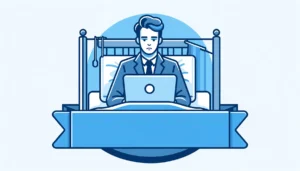Wellbeing at The Department for Transport
- 5 Min Read
Senior well-being positions are a relatively new role within HR, we spoke with Becky Thoseby, Group Head of Wellbeing at The Department for Transport to fully understand the shift that HR has made in the last few years and why wellbeing should never be overlooked.
- Author: Emily Sexton-Brown
- Date published: Jul 10, 2018
- Categories

Wellbeing at work should be very much topping the HR people agendas on a global scale, there has been ample research in the last few years showing the direct parallels between wellbeing and productivity in the workplace.
Business In The Community (BITC) carried out a mental health report which was released in October 2017, detailing that 91% of managers agree that their actions and what they do affects their employee’s wellbeing, why with numbers that high would anyone not want to see their workforce thrive?
For Thoseby one of the most important elements of her role is ensuring the culture is correct and the making sure every employee feels like they belong.

Do you think wellbeing as a whole is given enough acknowledgment within HR agendas?
I think it really varies. I see some organisations that are absolutely treating it as a priority, and others that don’t even know it’s a thing. I’m lucky to work for an organisation where wellbeing is given a high priority, to the extent that it’s discussed regularly at Board level.
Can you tell me the changes that have been made within the Department for Transport, and when they were made?
The most significant change I believe was the creation of my role in April 2017. To appoint a mid-senior manager to work on wellbeing full time sent a powerful message to the organisation that wellbeing was a priority. When I first took up post I focused on getting the basics right – raising awareness of existing support services, developing a recognisable wellbeing brand, educating the organisation on what wellbeing actually was, and introducing mental health first aiders to the organisation.
I also designed and launched the Well-being Action Plan, a tool for line managers and employees to use to start and continue a good quality, action-focused wellbeing conversation. And we’ve just finished our first ever employee wellbeing survey, which will be used as a diagnostic tool so that I can direct my interventions at the areas where they are most needed. I’m now turning my attention to culture change, so very soon I’ll be running the first in a series of workshops for our most senior leaders on the links between personal wellbeing and optimum performance, and how to look after their teams. I’m also running a comms campaign to bust some myths around what a high performer is like and help the organisation to understand that employees facing wellbeing issues can still be excellent performers if the issue is proactively managed and responsibility shared between the individual and their manager.
Later in the year, I’ll be running a further campaign to encourage the awarding of in year bonuses to colleagues who display excellent wellbeing leadership behaviours. My ultimate goal is to create a culture of well-being in the Department, where wellbeing is “just how we do things around here”.
What do you think is the single most important element of a wellbeing programme?
Without a doubt, organisational culture. Without a culture of well-being in an organisation, interventions will fall on stony ground or be an act of kindness at best. True organisational well-being is about how people are treated and what it feels like to work in that place. One of my Directors used an analogy that really resonated with me – well-being interventions are like making a better ointment to put on a cut, but a culture of well-being is what will actually heal the cut.
“To appoint a mid-senior manager to work on wellbeing full time sent a powerful message to the organisation that wellbeing was a priority. “
What is your biggest challenge?
At the moment in our head office we’re going through a very extensive refurbishment programme which will undoubtedly improve the working environment exponentially, and therefore have a real positive impact on wellbeing in the long run.
However, there will be quite a significant period of disruption where employees’ well-being is likely to suffer. The challenge is to keep people positive and focused on the final outcome while they’re experiencing immediate inconvenience.
“Wellbeing interventions are like making a better ointment to put on a cut, but a culture of wellbeing is what will actually heal the cut.”
What would you like to see progress and change in your line of work?
Two things. Firstly, for organisations to stop focusing on sickness absence as part of their wellbeing programmes. If reducing sickness absence is the aim, there are a number of pretty draconian ways to do this which are very effective – but what have you really achieved? Plus employees are not stupid, they can see when wellbeing initiatives are focused on the bottom line and not their actual wellbeing.
Secondly, a move away from seeing well-being through the lens of single issues like mental health or musculoskeletal issues, towards a whole person approach which recognises that well-being is a multifaceted, complex concept made up of a myriad of issues, many of which affect each other.









